

Silk
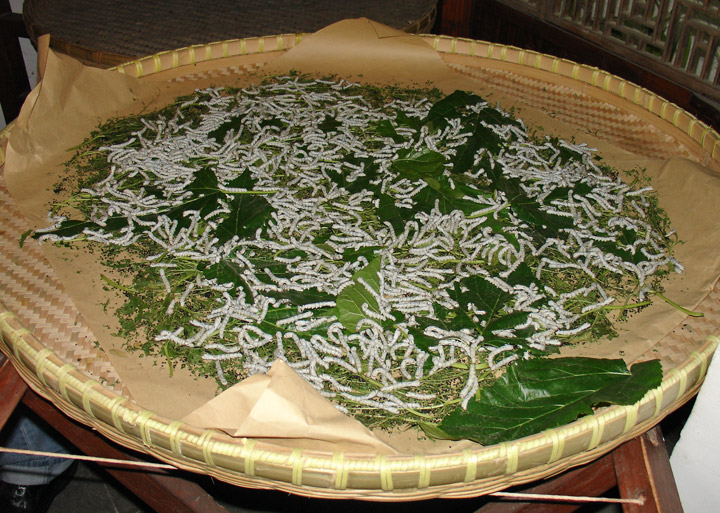
silkworms
Silk is one of the oldest known
textile fibers and, according to Chinese tradition, was used as long ago as the
27th century BC. The silkworm moth was originally a native of China, and for
about 30 centuries the gathering and weaving of silk was a secret process, known
only to the Chinese. Tradition credits Hsi-ling-shi, the 14-year-old bride of
the Emperor Huang Ti, with the discovery of the potential of the cocoon and the
invention of the first silk reel. China successfully guarded the secret until
AD300, when Japan, and later India, penetrated the secrecy.
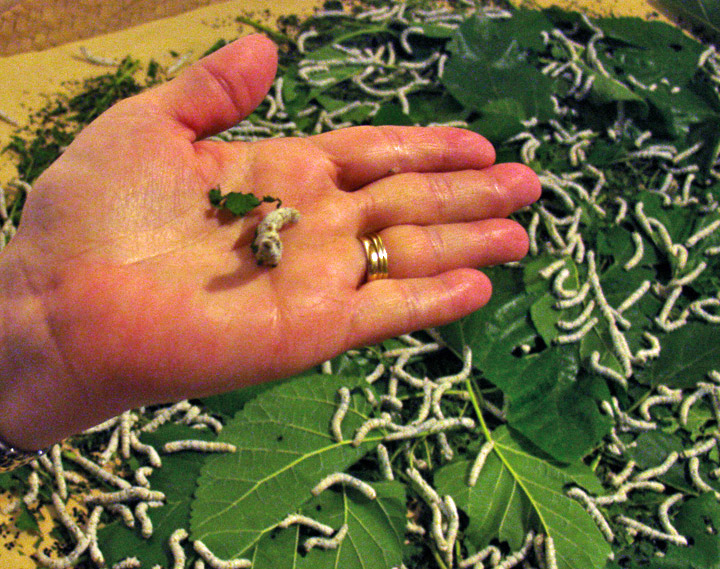
silkworm in the hand
Silkworm, common name for the
silk-producing larvae of any of several species of moths. Silkworms possess a
pair of specially modified salivary glands called silk glands, or sericteries,
which are used in the production of cocoons. The silk glands secrete a clear,
viscous fluid that is forced through openings, called spinnerets, on the
mouthparts of the larva; the fluid hardens as it comes into contact with air.
The diameter of the spinneret determines the thickness of the silk thread
produced.
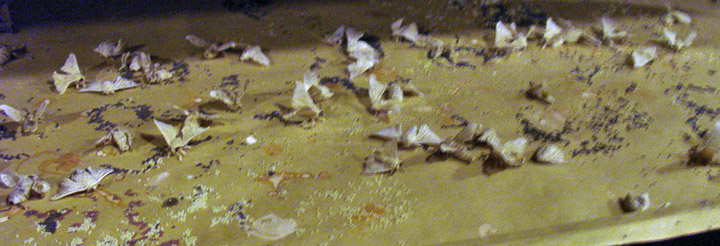
the silkworm moth
The best-known silkworm is the larvae
of the common, domesticated silkworm moth. This moth, native to China, was
introduced into Europe and western Asia in the 6th century AD and into North
America in the 18th century. The moth has been cultivated for many centuries and
is no longer known in the wild state. Breeders have produced many varieties of
the moth, the most important of which produce three broods of young annually.

gathered cocoons
A typical adult silkworm moth is
yellow or yellowish-white, with a thick, hairy body, and has a wingspread of
about 3.8 cm (about 1.5 in). The adult has rudimentary mouthparts and does not
eat during the short period of its mature existence; the female dies almost
immediately after depositing the eggs, and the male lives only a short time
thereafter. The female deposits 300 to 400 bluish eggs at a time; the eggs are
fastened to a flat surface by a gummy substance secreted by the female. The
larvae, which hatch in about ten days, are about 0.6 cm (about 0.25 in) long.
The larvae feed on leaves of white mulberry, Osage orange, or lettuce. Silkworm
caterpillars that are fed mulberry leaves produce the finest quality silk.
Mature larvae are about 7.5 cm (about 3 in) long and yellowish-gray or dark gray
in color.
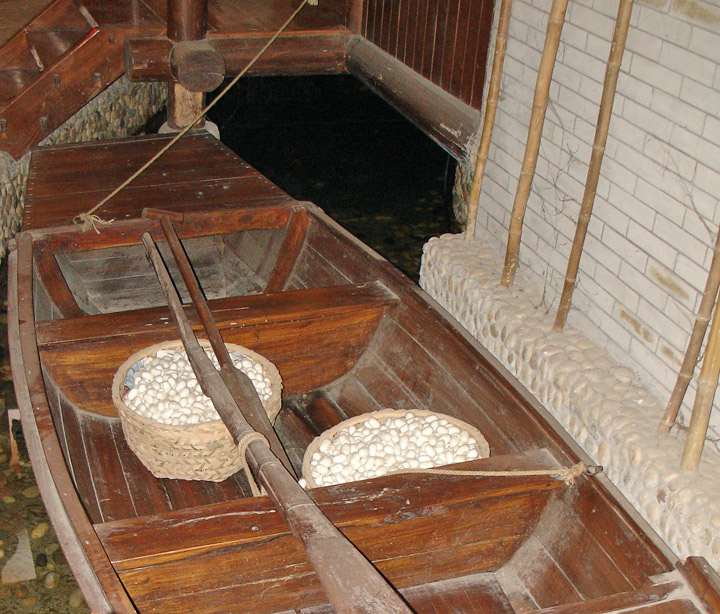
baskets of silk cocoons on the way to the factory
About six weeks after hatching, the common silkworm stops
eating and spins its cocoon. The length of the individual fiber composing the
cocoon varies from 300 to 900 m (1000 to 3000 ft). The silkworm pupates for
about two weeks; if allowed to complete its pupation period, it emerges as an
adult moth. Tearing during emergence damages the silken cocoon beyond commercial
use. Therefore, in the commercial production of silk, only enough adult moths
are allowed to emerge to ensure continuation of the species. Most of the
silkworms are killed by heat, either by immersion in boiling water or by drying
in ovens.
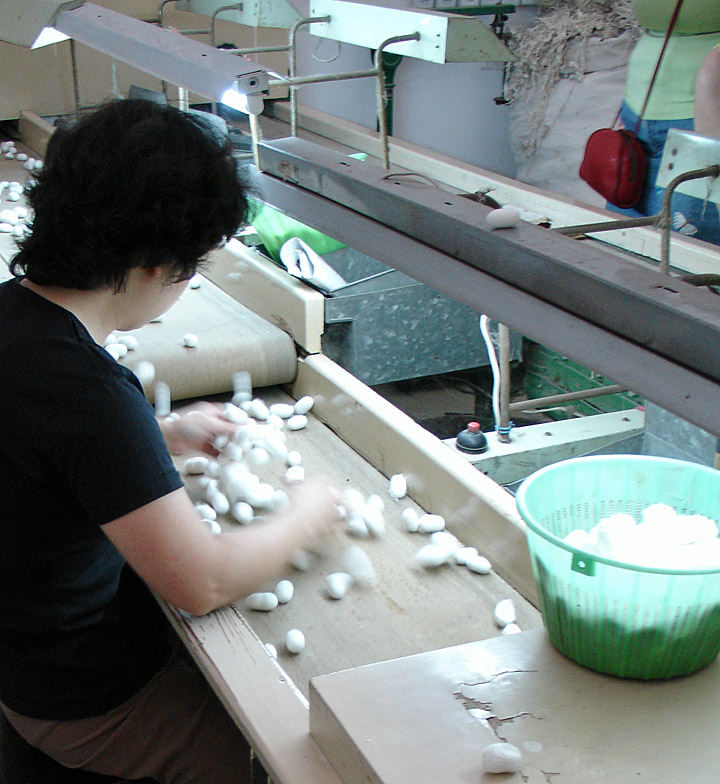
sorting the silk cocoons
Sericulture, or the raising of
silkworms, involves the incubation of the tiny eggs of the silkworm moth until
they hatch and become worms. After hatching, the worms are placed under a layer
of gauze, on which is spread a layer of finely chopped mulberry leaves. For six
weeks, the worms eat almost continuously. At the end of this period, they are
ready to spin their cocoons, and branches of trees or shrubs are placed in their
rearing houses. The worms climb these branches and make their cocoons in one
continuous thread, taking about eight days for the process. The amount of usable
silk in each cocoon is small, and about 5500 silkworms are required to produce 1
kg (2.2 lb) of raw silk.
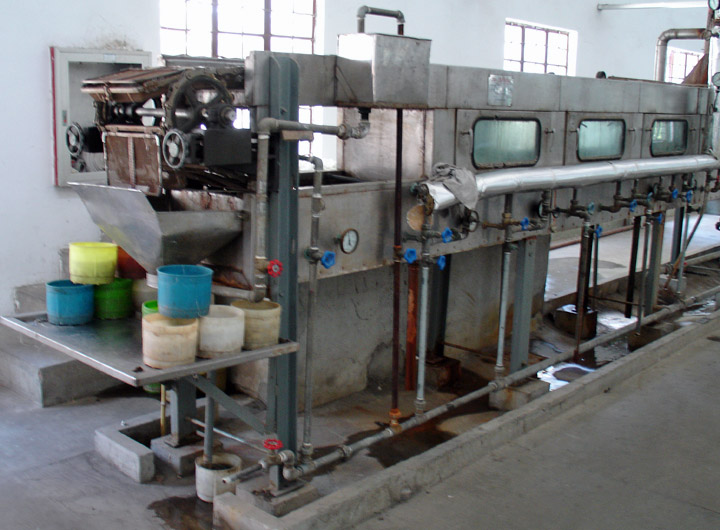
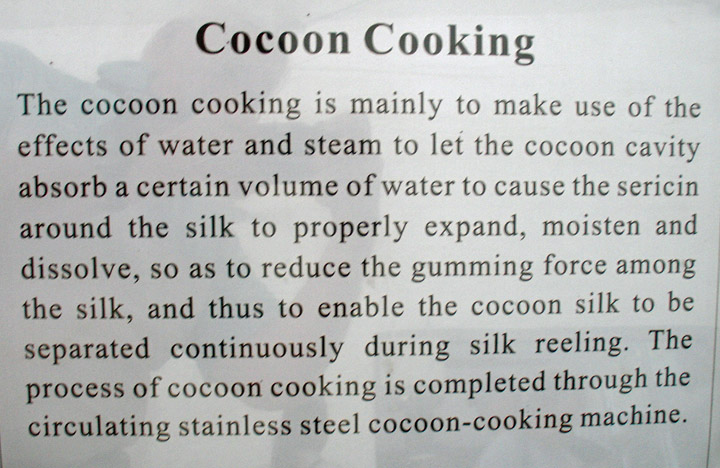
After the complete cocoons have been
gathered, the initial step in silk manufacture is to kill the insects inside
them. Thus, the cocoons are first boiled or treated in ovens, killing the
insects by heat. The silk fiber is obtained from the cocoons by a delicate
process known as reeling, or filature. The cocoons are first heated in boiling
water to dissolve the gummy substance that holds the cocoon filament in place.
After this heating, the filaments from four to eight cocoons are joined and
twisted and are then combined with a number of other similarly twisted filaments
to make a thread that is wound on a reel. When each cocoon is unwound, it is
replaced with another cocoon. The resulting thread, called raw silk, consists
usually of 48 individual silk fibers. The thread is continuous and, unlike the
threads spun from other natural fibers such as cotton and wool, is made up of
extremely long fibers. Along with cocoons damaged by emerging worms used for
breeding stock, the filaments from the coarse outer portion of the cocoon, which
is removed by brushing before reeling, and the inner portion of the cocoon,
which remains after reeling the raw silk, are mixed to produce a low grade of
silk staple that is spun into yarn.
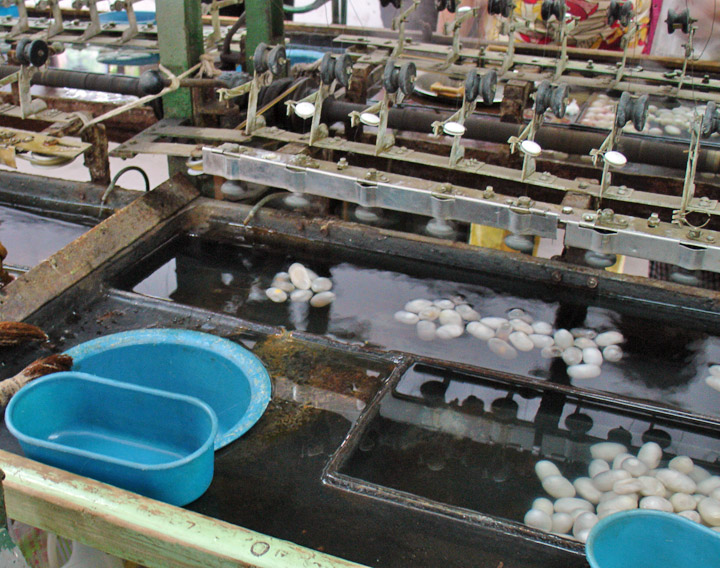
ready for reeling
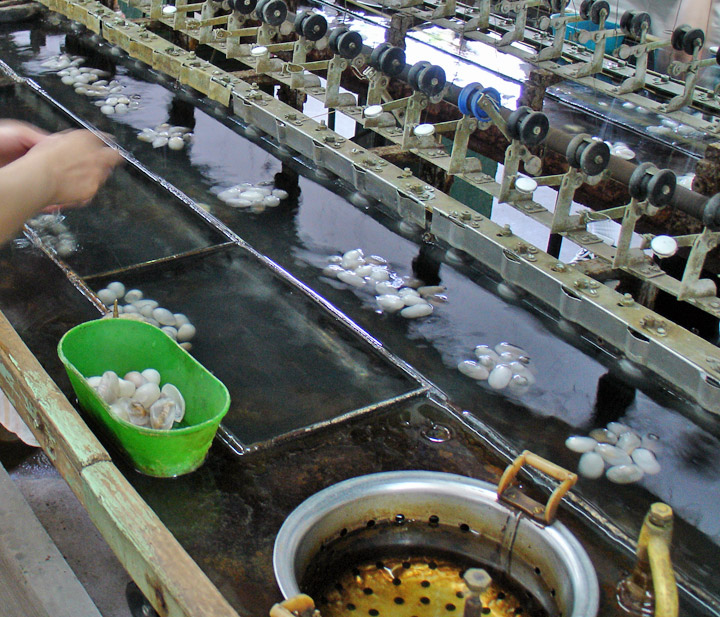


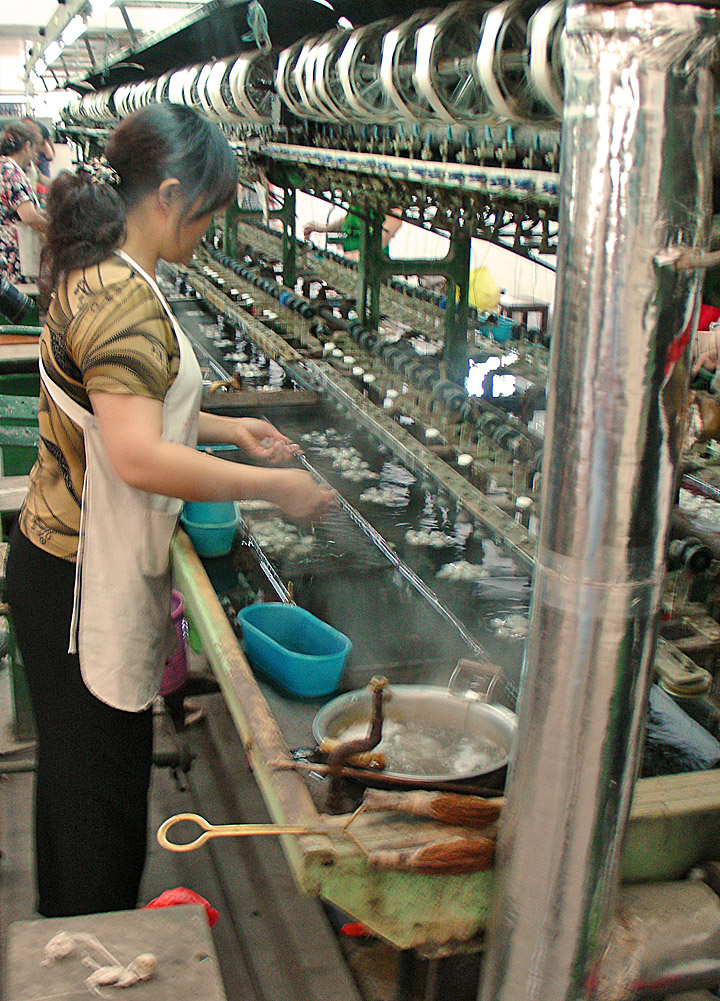
unwinding the silk filament from the cocoon
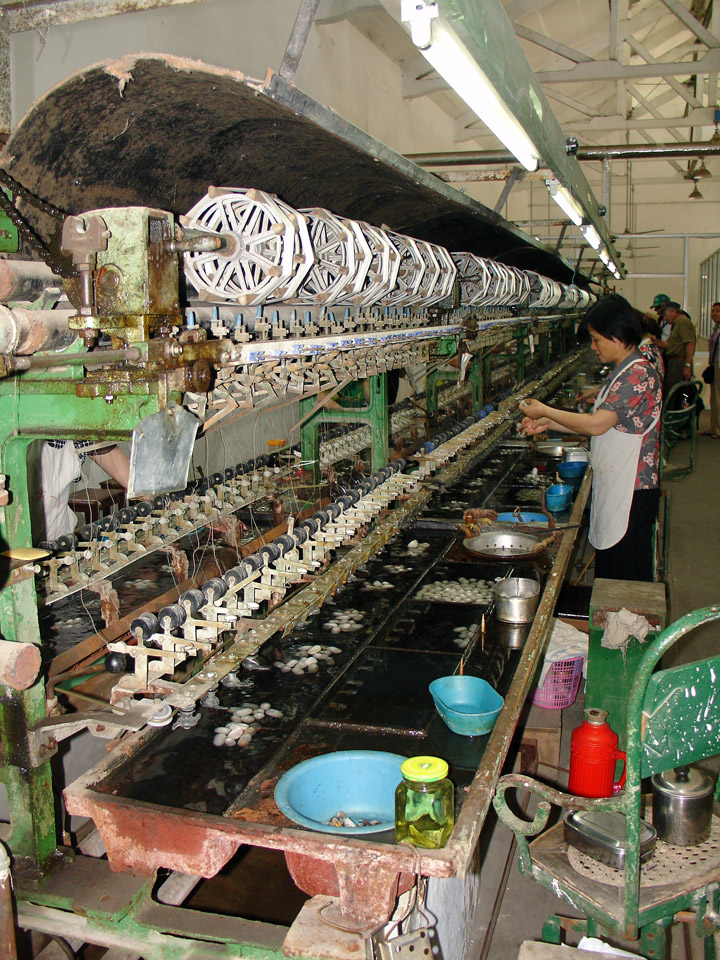
This woman removes strands of silk from cocoons and feeds them onto a reel
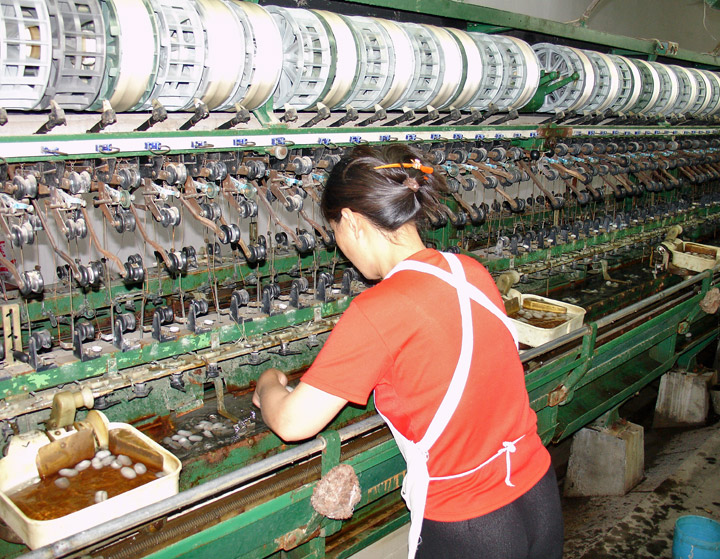
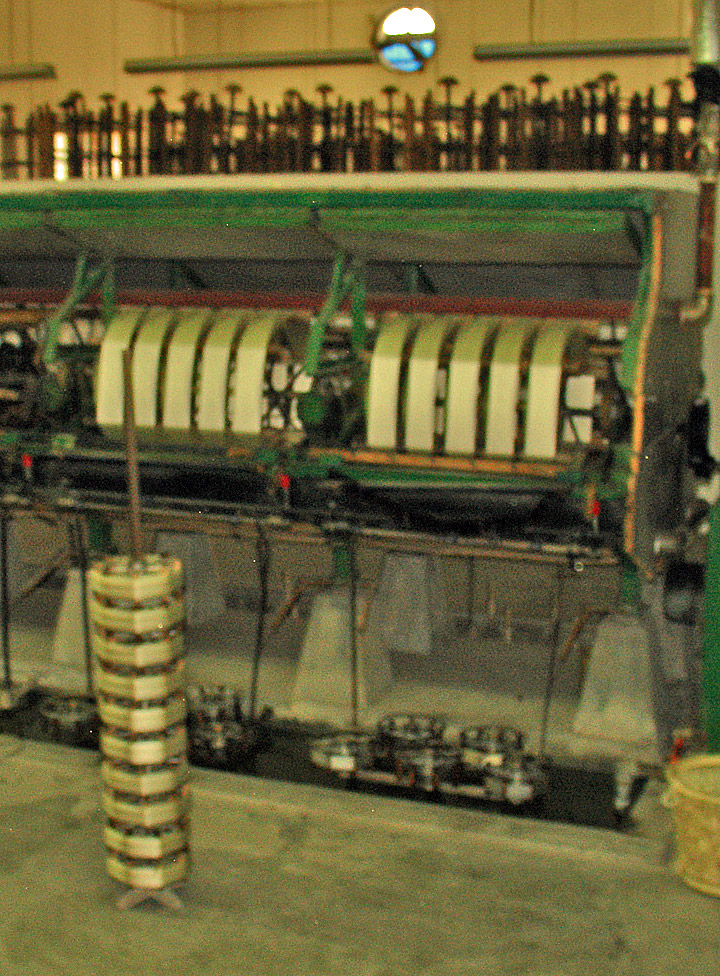
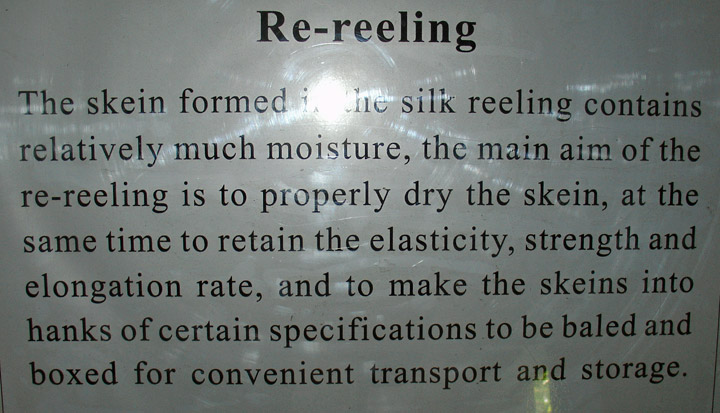
The next step in the processing of silk is the twisting of one
or more threads of the raw silk into a strand sufficiently strong for weaving or
knitting. This procedure is called throwing. Four different types of silk thread
may thus be produced: organzine, crepe, tram, and thrown singles. Organzine is a
thread made by giving the raw-silk thread a preliminary twist in one direction
and then twisting two of these threads together in the opposite direction at the
rate of about 4 turns/cm (10 turns/in). Crepe is similar to organzine but is
twisted to a much greater extent, usually between 16 and 32 turns/cm (40 and 80
turns/in). Tram is made by twisting in only one direction two or more raw-silk
threads, with 8 to 12 turns/cm (20 to 30 turns/in). Thrown singles are
individual raw-silk threads that are twisted in only one direction, the number
of turns depending on the quality of thread desired. In general, organzine
thread is used for the warp threads of materials, and tram threads for the weft,
or filling. Crepe thread is employed in the weaving of characteristic crinkly
fabrics, and single thread is used for sheer fabrics.
Text from Microsoft® Encarta®

stretching the silk fabric to build up the all silk comforter
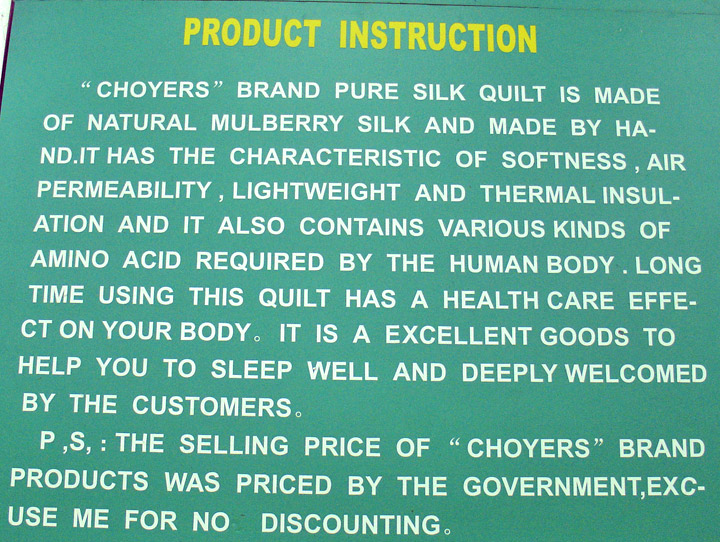
Please, No Haggling!
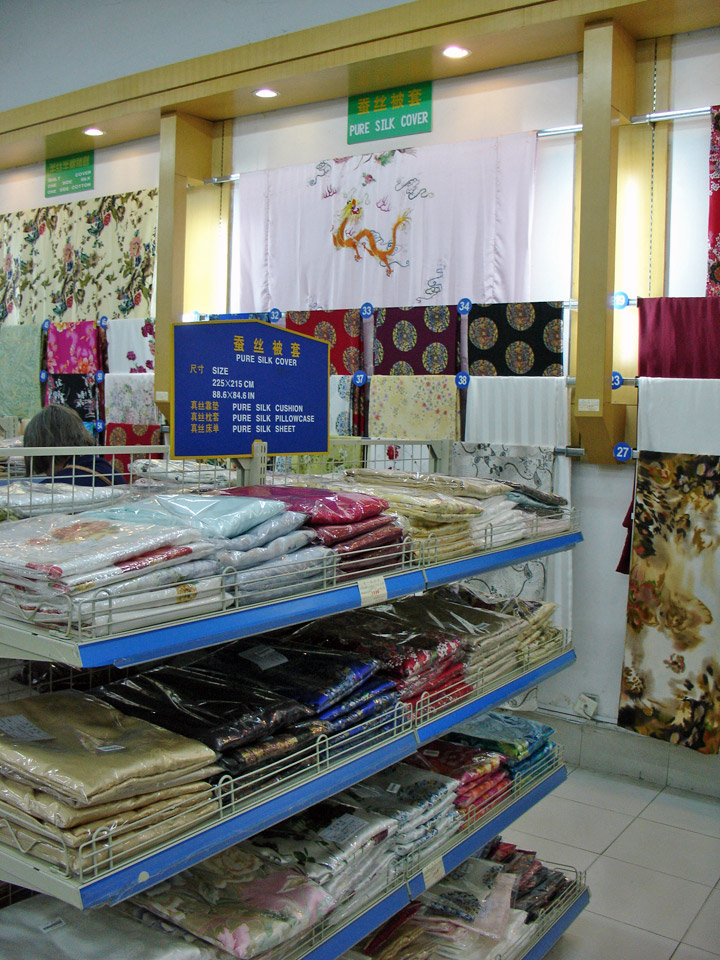
the products for sale in the factory shop
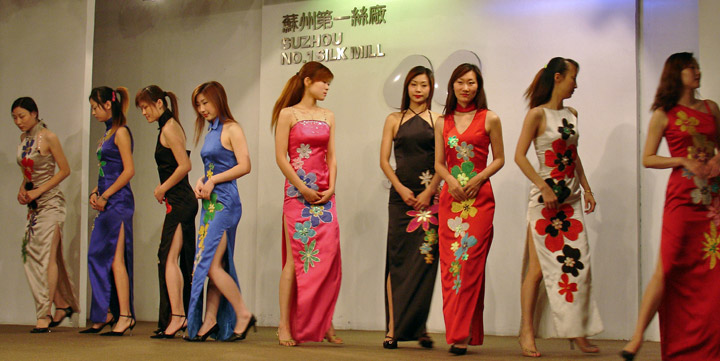
silk garments being shown at the factory Fashion Show